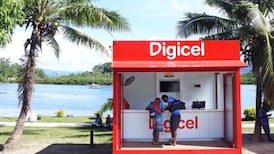Comment: Surprisingly, this week's publication of the Financial Regulator's Insurance Statistical Review has led to a bout of hand-wringing over supposed excessive profits for non-life insurance companies. Surprisingly, because the IFSRA review only confirms 2003 market data published by the Irish Insurance Federation (IIF) in June.
On the other hand, it seems it is sometimes just too hard for politicians and lawyers to resist the temptation to engage in some opportunistic insurer-bashing. Undoubtedly, 2003 was a very good year for non-life insurers in Ireland.
IIF's 20 non-life members made aggregate operating profits of €747 million. But the insurance business is a cyclical one and the 2003 results must be analysed in at least a five-year context, to see how shareholders' and policyholders' expectations are balanced. Seen over five years, the picture is very different. 2003 provided the first underwriting profit in five years, with a cumulative loss of €744 million over the period, including last year. Allowing for investment income, the market made an operating profit in only three of five years.
1999 to 2002 together only just broke even, and the cumulative market profit for five years was €764 million, an average annual profit of just under € 159 million, distributed over 20 companies. Meanwhile, the Government netted €333.5 million over the same five years from the 2 per cent stamp duty on premiums, to say nothing of corporation tax.
Put another way, insurers made a profit of 4.6 per cent of turnover (premium income), translating into an estimated return on capital of 11.5 per cent. This is by no means excessive or out of line with returns to shareholders achieved by companies in other sectors. In 2003, for example, CRH and Kerry Group each returned in excess of 14 per cent; and Ryanair achieved 29.4 per cent!
In fact 11.5 per cent represents about the bare minimum return needed to retain investment capital in the market, given the need to deliver a yield in excess of the return on guaranteed investments, arising from the extra risk of significant losses associated with investing in the insurance sector. Like any other business, an insurer must make a profit if it is to survive and serve the market. It is ironic that those who criticise insurers for making money tend to be the same people who complain that there is insufficient competition. They fail to explain how new entrants would be attracted if existing players are unable to deliver a reasonable return to investors.
So, have we got the balance right between delivering shareholder value and reducing prices to consumers? Profits are good news for policyholders, because they translate into reduced premiums and more competition.
Despite some of the nonsensical claims made this week, there is ample evidence to demonstrate that both personal and business customers have experienced significant reductions in premiums within the past year to 18 months. Last June's AA motoring cost survey found a 22 per cent reduction in motor premiums over the previous 12 months.
As of September 2004, CSO figures demonstrate a fall of over 15 per cent since September 2003, the biggest annual fall in rates yet experienced in this cycle. In real terms, i.e. allowing for general inflation, this brings motor insurance rates to 5 per cent below what they were in September 1999.
In commercial insurance, an IIF survey in March suggested average reductions of nearly 30 per cent. A follow-up check this week indicates that a similar level of reductions has continued for renewals in the third quarter of the year. Individual cases of cuts of 50 per cent and more in 2003's premium are not uncommon; and the largest saving in this week's survey was on a pure public liability cover, unaffected by trends in motor or property insurance rates. This surely gives the lie to claims that public liability rates have not reduced.
The industry data is confirmed by evidence given earlier this year by independent witnesses to the Oireachtas Joint Committee on Enterprise and Small Business. The Construction Industry Federation stated that its members "are generally experiencing a 25 per cent drop in renewal premiums". Similarly, a representative of the Irish Hotels Federation confirmed that, "by March 2004, serious reductions in premiums averaging 46 per cent" were being experienced by its members.
These cuts in premium have taken place on foot of reductions in claims frequency and cost, independent of the Government's Insurance Reform Programme and before the vast majority of the measures in the programme take effect.
Insurers have taken the initiative in a range of areas to tackle factors which affect costs, including the IIF-sponsored National Safety Council road-safety awareness campaign. The industry is also making strides in tackling fraud - which costs Irish insurers up to €100 million annually - with an anti-fraud advertising campaign and the insurance confidential hotline for reporting suspected insurance fraud (Lo-Call 1890 333 333).
Together with the impact of the Government's reform measures, these initiatives give cause for hope that claims costs - and therefore premiums - may fall even further.
Watch this space!
Michael Kemp is the chief executive of the Irish Insurance Federation, the representative body for insurance companies in Ireland.










